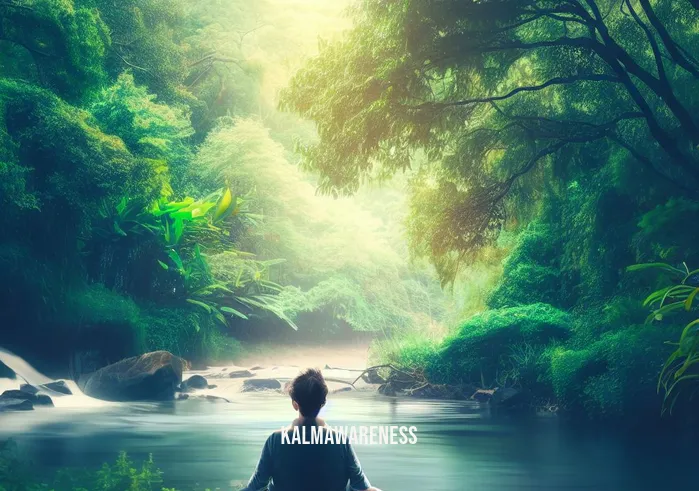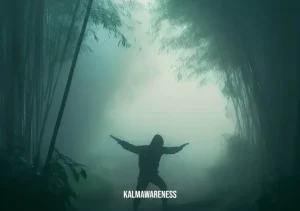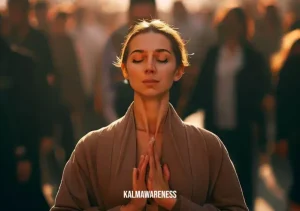The Depth and Diversity of the Object of Meditation
Meditation is an age-old practice that has found its way into modern lifestyles, helping individuals find peace, focus, and understanding. At its core lies the concept of the “object of meditation”. Let’s embark on an exploration of this critical element.
What is the Object of Meditation?
The object of meditation refers to the focal point during the meditation process. It can be a thought, a visual, a sound, or even a sensation. By focusing on this singular object, the mind can move away from the chaos of scattered thoughts and distractions, finding stillness and concentration.
Breathing as the Object of Meditation
One of the most commonly used objects of meditation is breathing. Breathing is both a voluntary and involuntary action, connecting our conscious mind with the autonomic functions of our body. Through practices like rain breathing, one can cultivate mindfulness, grounding, and a deeper connection to the present moment.
“In focusing on the breath, we anchor ourselves to the present, drawing away from the turbulence of past regrets and future anxieties.”
The Power of Mantras
The ancient art of chanting sound and using words of power also establishes itself as an effective object of meditation. Mantras can be a syllable, word, or phrase that resonates deeply with the individual. Repeating them allows for a focused, trance-like state where deeper insights can emerge.
Some other mantra-centric practices include:
Visualization and Meditation
Visualization is another powerful technique where we use our mind’s eye to conjure vivid and detailed mental images. Whether it’s the serene imagery in pink meditation or the more structured approach in 6-phase meditation, visualization helps in sculpting our thoughts, emotions, and even aspirations.
For those keen on delving into the mystique of dreamlike states, there’s the best lucid dreaming guided meditation. Here, the boundaries blur between the waking state and the dream realm, allowing a unique object of focus.
Body Scan and Loving-kindness Meditation
Beyond the mind, the body can be a powerful focal point. The practice of body scan involves mentally scanning each part of our body, acknowledging sensations, and releasing tension. This not only enhances mindfulness but also promotes relaxation and stress relief.
On the other hand, Loving-kindness meditation involves focusing on cultivating feelings of goodwill, kindness, and warmth towards oneself and others. It can be a transformative practice, especially in these challenging times where anxiety is prevalent.
Conclusion
The object of meditation is as diverse as the techniques themselves. Whether you’re a meditating man or someone who’s just starting their journey with practices like the 6-minute meditation, there’s always something new to discover.
“Meditation is not just a practice but a journey. And in this journey, the object of our focus becomes the lighthouse, guiding us through the fog of distractions.”
We invite you to continue to the next part of this article, where we’ll delve deeper into some advanced meditation techniques and how you can tailor them to find your unique object of focus.

Advanced Techniques: Diversifying the Object of Meditation
Diving deeper into the vast ocean of meditation practices, there’s an array of techniques that focus on different objects of meditation. From subtle energy shifts to potent visualization methods, these advanced techniques offer varied experiences, each unique in its purpose and effect.
Harnessing the Power of Sound and Vibrations
Sound and vibrations have been recognized as powerful mediums for concentration and healing. Taking our focus beyond traditional mantras, we arrive at techniques like:
- Shifting Guided Meditation: This technique leverages the power of soundscapes to shift one’s state of consciousness. As the name suggests, it is guided, ensuring practitioners traverse the sonic landscape safely.
- Chit Shakti Meditation for Success: A technique that taps into the inherent power (Shakti) of our consciousness (Chit) using sound vibrations. Ideal for those looking to align their energies for success and prosperity.
- Hug Method Shifting: An intimate approach where sound vibrations are felt physically, akin to a hug. This method is often used to cultivate feelings of security and love.
Powerful Visualization Techniques
Visualization continues to be a vast realm in the world of meditation. Here are some methods that stand out:
- Attraction Meditation: Rooted in the laws of attraction, this method involves visualizing one’s desires to manifest them in reality.
- Manifestation Jar Meditation: A unique blend of tangible actions and mental visualization, this method involves mentally “storing” your aspirations in a virtual jar to nurture and manifest them.
Table: Meditation Techniques for Specific Outcomes
| Technique | Primary Object of Meditation | Outcome |
|---|---|---|
| Meditative Chinese Discipline | Breath, Movement, and Sound | Enhanced physical health, mindfulness, and balance |
| Meditation for Slowing Down | Time and Spaced Breaths | Reducing pace, promoting relaxation |
| Chopra Primordial Sound Meditation | Primordial Sounds | Spiritual awakening, Deep relaxation |
| Rain Breathing | Breath synced with the sound of rain | Mindfulness, grounding |
| Pink Meditation | Visualization of the color pink | Emotional healing, nurturing feminine energies |
Conclusion
The object of meditation remains the cornerstone of every meditative practice. Whether you’re focusing on your breath, a sound, a visualization, or even an emotion, understanding the object deepens the meditation experience. The paths are many, but the destination is singular: heightened awareness and inner peace.
“The journey in meditation is endless. Yet, with every step, with every focus, we come closer to our true selves.”
We invite you to continue to the next part of this article where we will explore the integration of meditation in daily routines and how these advanced techniques can be seamlessly infused into our everyday lives.
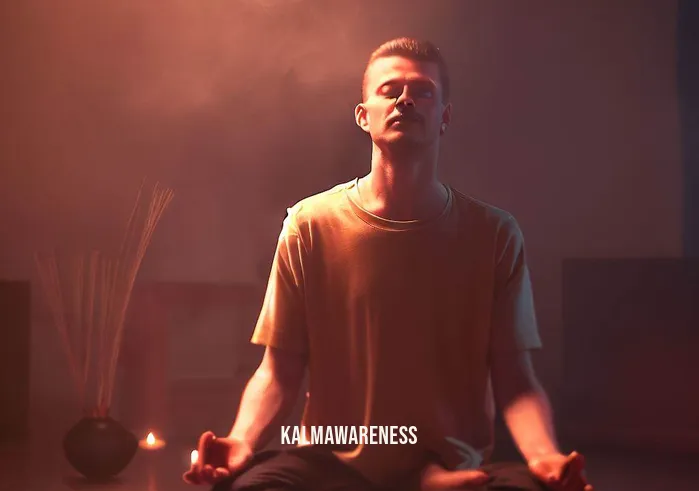
Seamlessly Weaving Meditation into Daily Life
As we journey deeper into the heart of meditation, it becomes evident that meditation is not just an isolated practice but an approach to life. Integrating the object of meditation into our daily routines can transform mundane tasks into mindful exercises, rendering even the most ordinary moments extraordinary. This chapter will reveal how you can effortlessly infuse your day with mindfulness, ensuring the object of meditation remains a constant guiding star.
Morning Routines: Setting the Tone for the Day
“Every morning we are born again. What we do today is what matters most.” – Buddha
Begin each day with intention. A simple 6-minute meditation can set the tone, allowing you to focus on your chosen object of meditation. Whether it’s your breath, a mantra, or a visualization, this morning ritual can ensure you start the day grounded and aligned.
Mindful Commuting: Transforming Travel Time
“Wherever you go, go with all your heart.” – Confucius
For many, commuting can be a source of stress. However, with a mindful approach, this can transform into a haven for reflection. For instance, the rhythm of a train or the hum of a car engine can serve as an object of meditation, turning travel time into a grounding practice.
Mindful Eating: A Feast for the Senses
“Let food be thy medicine and medicine be thy food.” – Hippocrates
Our meals offer a perfect opportunity to practice mindfulness. Focus on the meditative aspects of food, from the texture and flavor to the sound of chewing. Engage fully with every bite, turning meals into an immersive sensory experience.
Nature Walks: Embracing Earth’s Healing Energies
“Look deep into nature, and then you will understand everything better.” – Albert Einstein
Nature has a profound way of grounding us. Incorporating nature walks, where the sounds of rustling leaves or flowing water become your object of meditation, can offer a powerful reset. Allow the healing rhythms of nature to cleanse and rejuvenate your spirit.
Night Rituals: Ending with Gratitude and Reflection
“The day is over, night has come. Today is gone, what’s done is done. Embrace your dreams, through the night. Tomorrow comes with a whole new light.” – Unknown
As the day winds down, engage in practices like the Chit Shakti Meditation for Success to reflect on the day’s accomplishments and set intentions for the morrow. Let your chosen object of meditation guide you into a peaceful slumber.
Conclusion
“Meditation is the tongue of the soul and the language of our spirit.” – Jeremy Taylor
The object of meditation doesn’t remain confined to a cushion or a specific time slot. It permeates every aspect of our existence, turning life into a meditative dance. By weaving these practices into our daily routines, we not only enhance our mindfulness but also cultivate a deeper connection to the world around us.
We invite you to continue to the next part of this article, where we’ll share stories from individuals who have transformed their lives by seamlessly integrating the object of meditation into their daily routines.
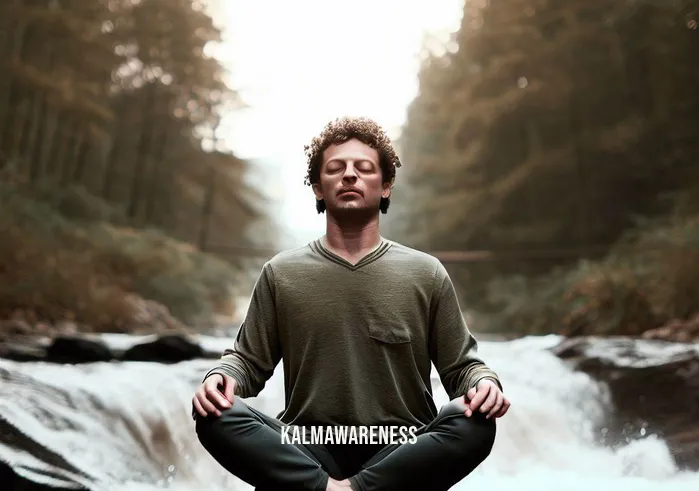
Transformational Journeys: Stories of Meditation’s Profound Impact
Dedicating oneself to the object of meditation isn’t just a fleeting trend. It’s a profound commitment that often bears transformative fruits. This chapter is a mosaic of inspiring stories, showcasing individuals who’ve integrated meditation into their lives and witnessed deep-rooted changes. Let these tales inspire and guide you on your journey.
A Symphony of Breath
- Jane’s Journey: A corporate banker, Jane led a high-stress life. She stumbled upon the whole-body breathing technique and began her mornings by syncing her entire being to her breath’s rhythm.
- Outcome: Over time, she noticed an increase in her ability to handle stress, improved focus at work, and a newfound sense of inner calm.
- Jane’s Insight: “The breath, our constant companion, is a grounding force. Making it the central object of meditation enriched my life in unexpected ways.”
Harmony Through Chant
- Rohan’s Revival: Struggling with anxiety, Rohan felt disconnected from the world. A friend introduced him to the art of chanting and sound as a meditative practice.
- Outcome: As he consistently practiced chanting, his anxiety levels diminished. The vibrant sounds became his object of meditation, providing a reassuring anchor.
- Rohan’s Wisdom: “In sound, I found solace. When words failed me, chants healed me.”
Mantras: Words of Power
- Liam’s Leap: A writer by profession, Liam suffered from writer’s block. He learned about meditating on words of power and decided to give it a go.
- Outcome: Not only did his block clear, but Liam also began writing with more depth and emotion than before. Words, when used as an object of meditation, unlocked his potential.
- Liam’s Reflection: “Words carry energy. When meditated upon, they can release untapped reservoirs of creativity.”
Dance of Visualization
- Anaya’s Awakening: An artist who lost her muse, Anaya began exploring 6-phase meditation which heavily relied on visualization.
- Outcome: This meditative practice led her to vivid visual journeys that reignited her passion. Her art transformed, becoming more vibrant and alive.
- Anaya’s Revelation: “Visualization is more than just seeing; it’s feeling, experiencing, and living.”
Embracing Loving-kindness
- Elena’s Evolution: Dealing with past trauma, Elena was often clouded by negative emotions. A therapist recommended she practice Buddhist chants focusing on loving-kindness.
- Outcome: As she channeled her energy into sending love and kindness to herself and others, her trauma began healing. The chant’s words became her object of meditation, enveloping her in warmth.
- Elena’s Epiphany: “In love and kindness, I discovered strength. It’s the balm that heals all wounds.”
Conclusion
It’s evident that the journey of meditation, with the right focus or object, can indeed be transformative. From healing wounds to sparking creativity, the tales above underline the versatility and potency of meditative practices. The object of meditation isn’t just a tool; it’s a compass, guiding practitioners towards their truest selves.
“The mind is everything. What you think, you become.” – Buddha
As we proceed, the next chapter will delve into the scientific facets of meditation. How does focusing on an object of meditation affect our brainwaves, emotions, and overall health? Stay tuned as we demystify the science behind meditation’s transformative power.

The Final Stretch: Bringing the Pieces Together
Our journey through the landscape of meditation has been nothing short of enlightening. Delving deep into the significance and profound effects of using a focal point, or the object of meditation, we have traveled across personal tales, scientific realms, and timeless wisdom. Yet, before we culminate this odyssey, it’s essential to consolidate our understanding and look forward to the enriching paths meditation can guide us on.
Lighter Ways to Meditate
As our lives become increasingly hectic, it’s essential to find simpler, more accessible forms of meditation. Engaging with the object of meditation need not always be a deep, intense journey. Let’s explore some lighter, yet equally impactful ways:
- Six-Minute Resets: Are you often pressed for time? The 6-minute meditation offers a quick reset, helping you to center yourself amidst chaos.
- Nature’s Embrace: There’s serenity in nature. Techniques like rain breathing incorporate the soothing sounds of nature as your meditative focus.
- Joyful Manifestations: Did you know meditation can be a fun activity? The playful concept of a manifestation jar allows you to visualize your dreams and aspirations, using them as objects to meditate upon.
Always Room for More
Meditation is an expansive realm. No matter how much you dive into it, there’s always another layer to unravel. Curious souls can explore the Chit Shakti meditation for success, a powerful technique to align oneself with the universe’s frequencies, or the wisdom of the meditative Chinese discipline, an age-old practice emphasizing balance and harmony.
A Parting Note
It’s been a remarkable journey together, exploring the multifaceted world of meditation. Remember, the essence of meditation lies not in the technique but in the intention. Whether you focus on a mantra, your breath, or the rhythmic patter of rain, the key is to connect deeply with your chosen object of meditation.
“Peace comes from within. Do not seek it without.” – Buddha
It’s my sincere hope that this exploration has provided you with insights, tools, and inspiration to integrate meditation into your daily life more profoundly.
Before You Go…
Dive deeper, explore more, and continue unraveling the mysteries of the mind and soul with our plethora of articles and guides on KalmAwareness. Each piece is a labor of love, aimed at enhancing your wellbeing journey.
Thank you for accompanying us on this enlightening ride. Here’s to many more journeys, many more discoveries, and a lifetime of peace, clarity, and joy. Namaste.
I hope you’ve enjoyed our series on the object of meditation. To continue exploring and enriching your knowledge, feel free to revisit our magazines and enlighten yourself further. Until next time, stay calm, stay aware, and always be in the present moment. 🙏

